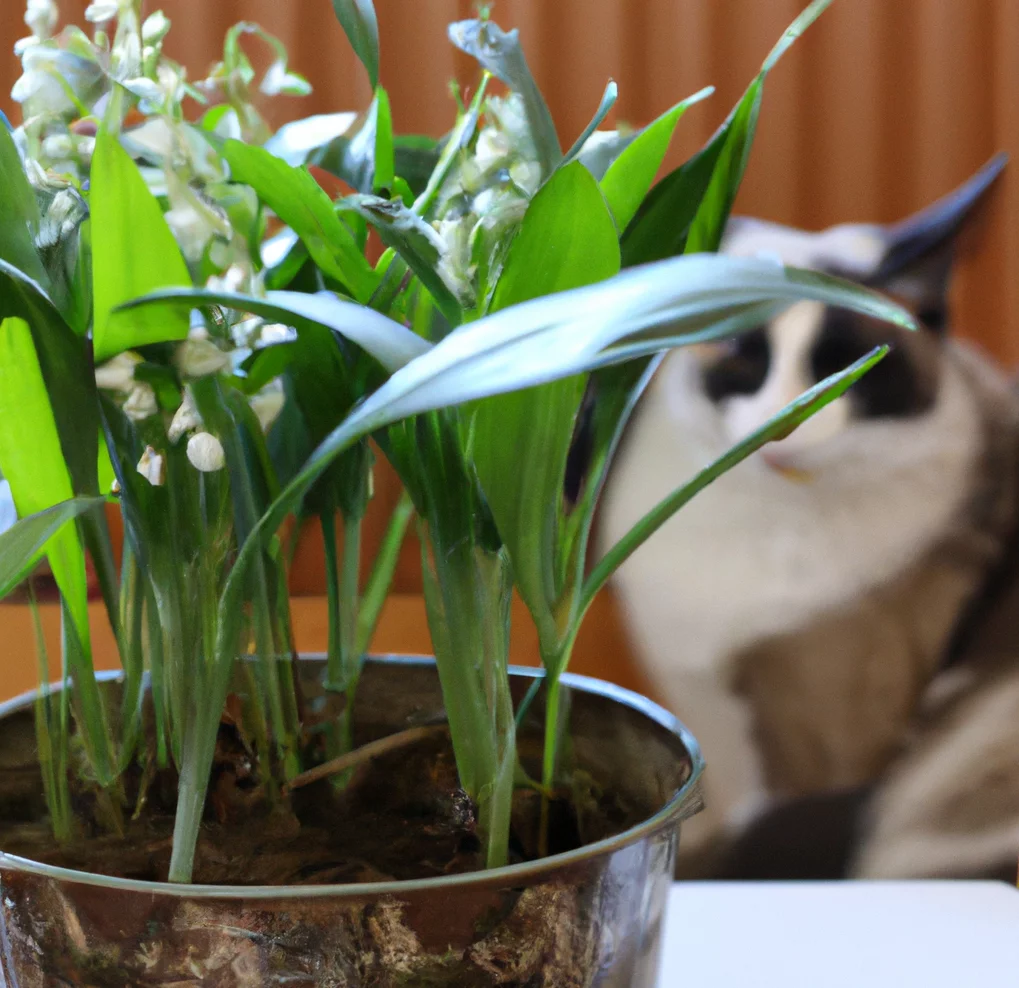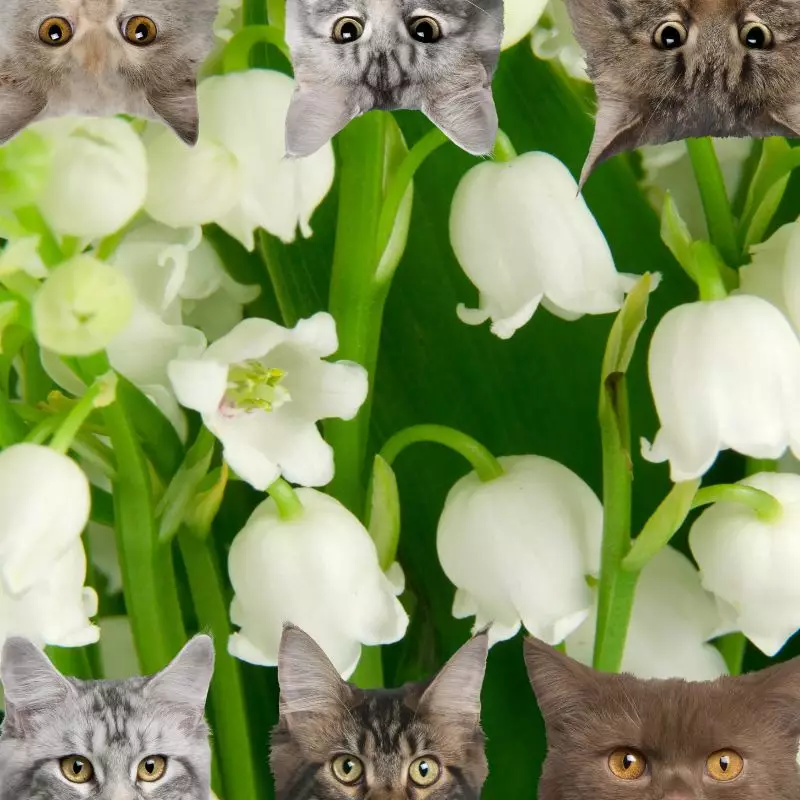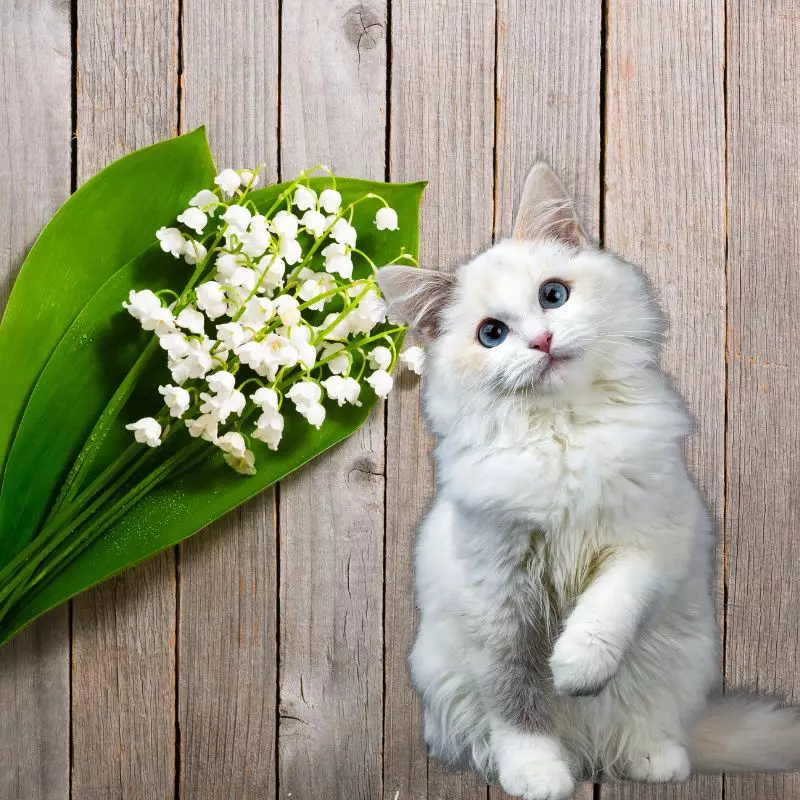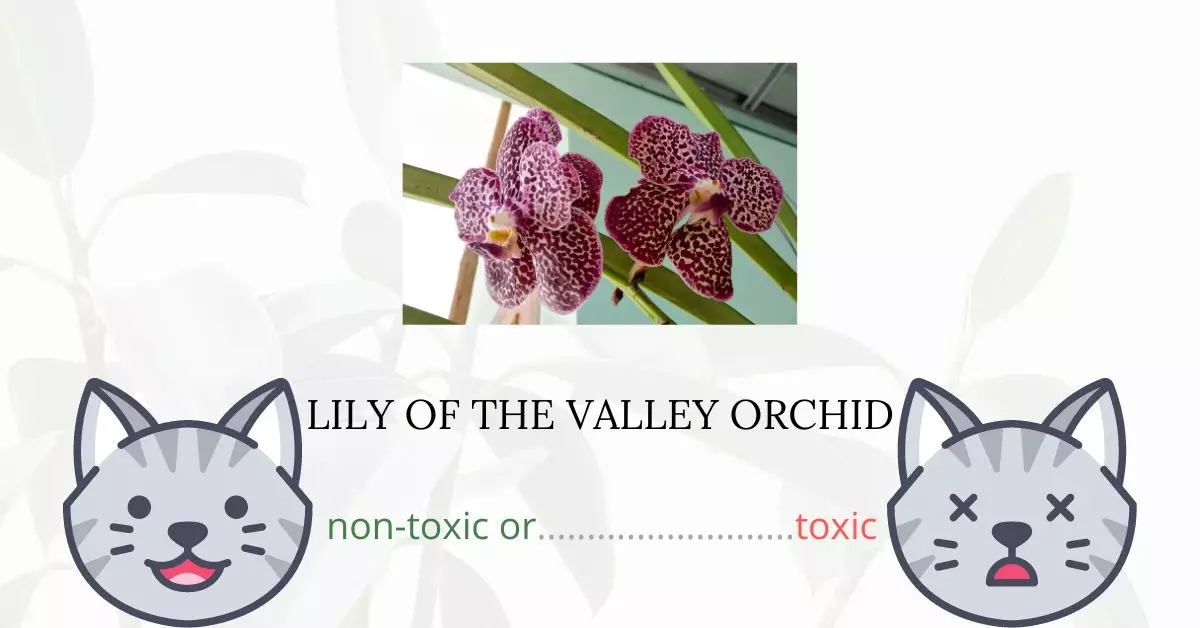Lily of the Valley Orchid is not toxic to cats.
This article was crafted in close collaboration with a team of experienced DVMs (doctors of veterinary medicine) who contributed their expertise on the potential risks posed by various plants and their effects on feline health. Drawing from reputable sources like the ASPCA and PetMD, we have verified that the Lily of the Valley Orchid is indeed listed as a non-toxic plant for not only cats but also dogs and horses.
It’s essential to note, however, that while many orchid species, including the Lily of the Valley Orchid, are deemed safe for felines, it’s always wise to supervise your cat around plants. Even non-toxic varieties can cause minor digestive discomfort if consumed in large quantities. Always be cautious and ensure your pet doesn’t develop a habit of chewing on any plant.
Can Cats Eat Lily of the Valley Orchid?

Cats who have eaten a tiny bit of Lily of the Valley Orchid will not suffer from adverse effects. But, you should be mindful if they consumed huge quantities of this orchid or even any kind of plant. Since cats are carnivores, their bodies are not made to process excessive amounts of plant matter in their gut. As a result, they may experience indigestion and show symptoms of diarrhea, vomiting, and abdominal pain.
The symptoms will ultimately go away once the cat’s body has cleared the plant components. If the symptoms are not gone within 24 hours, you should consult with your veterinarian.
Additionally, some plants may also contain residues from products such as fertilizers and pesticides. These products usually contain properties that may be hazardous for our feline companions. If your cat has eaten a plant from a neighbor’s garden, you may never know what products have been used on their plants.
What is Lily of the Valley Orchid?

Lily of the Valley orchid is a member of the Orchidaceae family which is found in humid woods at higher elevations in South and Central America. Scientifically known as Cuitlauzina pulchella, this orchid is classified as an epiphyte and is most usually seen on pine and oak trees.
An epiphyte is a non-parasitic plant-growing organism that lives on the surface of another plant. Rather than the host plant, it obtains moisture and nutrients from its environment.
Because it is self-sufficient, this plant appears as a pseudobulb, which is a pod-like structure that develops immediately underneath the leaves. These pods, like bulbs buried below the earth, contain nutrients and water that help the plant survive in difficult situations.
Keeping Cats Away From Lily of the Valley Orchid

You may put your orchids in a hanging basket so they can be safe from your high jumper cats. Spraying natural deterrents on your plants will also aid to drive your cats away from them.
Some experts also recommend employing materials such as aluminum foil. Cats avoid aluminum foil as much as possible because they dislike its crinkly scent and feel. Place a layer of aluminum foil over the solid and around your plants to adopt this approach. Once your cat has touched the covered area, the foil will function as a barrier, discouraging them from approaching the plants.
Plants to Avoid For Your Cats
If you are a cat owner and unsure if the plants growing in your yard are harmful to your cats, check out this list of toxic plants for cats. You can also check our list of non-toxic plants for cats.





